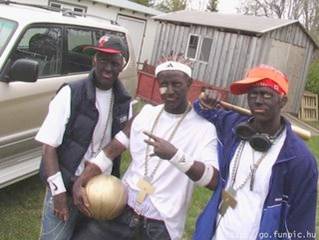As many of you presumably already know, “Blackface” is the practice of non-Blacks using dark-colored makeup or other materials to darken their face and skin so that they appear to be Black, usually for the purpose of impersonating a Black person in a public setting. The history of this practice is a long and sad one and almost always is associated with reinforcing and perpetuating racist stereotypes about Blacks. In fact, I recently wrote about a high-profile Blackface incident in Australia and commended entertainer Harry Connick Jr. (who is White) for calling it out as racist.
Similarly, “Yellowface” is the practice of non-Asians impersonating Asians in a public setting, usually by dressing them up in traditional “Asian” garments, altering their eyelids, or donning some other prop such as buck teeth, all of which again serve to reinforce and perpetuate racist stereotypes against Asians and Asian Americans.
Recently, there was a skit on Saturday Night Live (SNL) that included actor Will Forte impersonating Chinese President Hu Jintao, along with Iranian American actor Nasim Pedrad playing the role of an interpreter. The video of the skit is below:
Since Will Forte is in fact White and is portraying an Asian character, this is technically Yellowface. But the question then becomes, is this racist and offensive? I know that many Asian Americans do find this particular portrayal offensive and they certainly have a right and reason to do so.
For me however, I will go out on a limb and say that I personally don’t think this particular portrayal was that offensive. It would be one thing if SNL had an Asian male cast member who could have played Hu Jinato but was passed over in favor of Forte, but obviously this was not the case (although it would be nice if SNL eventually had an Asian American male cast member). Further, Forte’s portrayal of Hu did not include the racist characteristics usually found with offensive Yellowface portrayals.
In other words, Forte did not artificially alter his eyes or eyelids or wear traditional garments to look more “Oriental.” Nor did he use racist caricature features such as buck teeth. Further, even though Forte did impersonate Hu speaking Chinese, it was very muted and not a central part of his portrayal, as opposed to the traditional exaggerated and blatantly offensive “ching chong” artificial dialog that we’ve seen in the past.
Further, the SNL skit did not include any elements or activities that have been associated with offensive Asian characters through the years, such as performing kung fu, working as a cook or waiter, or as an evil villain. Also, Forte did not try to portray Hu speaking English with a Chinese accent, which would have been much more offensive. Further, Pedrad’s portrayal of the interpreter did not include an exaggerated Chinese accent either.
In fact, fellow sociologist blogger Lisa at Sociological Images has just compiled an excellent video retrospect of White actors playing Asian characters through the years. If you watch the videos included in her post, you will see that all of them include at least one of these offensive characteristics that I listed above.
The larger point I am trying to make is that there are different degrees of offense when it comes to Asian Americans. Regular readers to this blog know that I’ve spent plenty of time pointing out different individual- and institutional-level incidents and examples of that I have found offensive and racist toward Asians and Asian Americans. But ultimately, American society and the world in general are not simple either-or, black-or-white, yes-or-no dichotomies. Instead, we need to realize that there are varying degrees of oppression, inequality, and in this case, potentially offensive media portrayals.
Asian American actors are likely to tell you the same thing when it comes to which roles they accept or reject. As this clip from the Turner Classic Movie series “Race in Hollywood: Asian Images in Film” shows, even well-respected Asian American actors will take on roles that have them playing a sweatshop worker or one that has them speak with an Asian accent, if other aspects of their character are more nuanced and substantive:
Similarly, even Asian American writers and filmmakers have been criticized when it comes to how they portray members of their community. Relatively recent examples include when author Amy Tan and director Wayne Wang were criticized for promoting gender stereotypes in the otherwise critically-acclaimed and watershed Asian American book and movie The Joy Luck Club, or when director Justin Lin was criticized for his less-than-model-minority portrayals of Asian American high school students in another breakthrough Asian American film Better Luck Tomorrow.
In the end, yes, it would have been nice if SNL had an Asian American male cast member who could have played Hu in this particular case. But given that limitation, I did not find their skit to be nearly as offensive as past portrayals that have made me wince in disgust. Maybe this just means that I’ve been desensitized by so many blatantly racist portrayals through the years. But more likely, I think it just shows that there are different levels of offense when it comes to how Asians and Asian Americans are portrayed.

